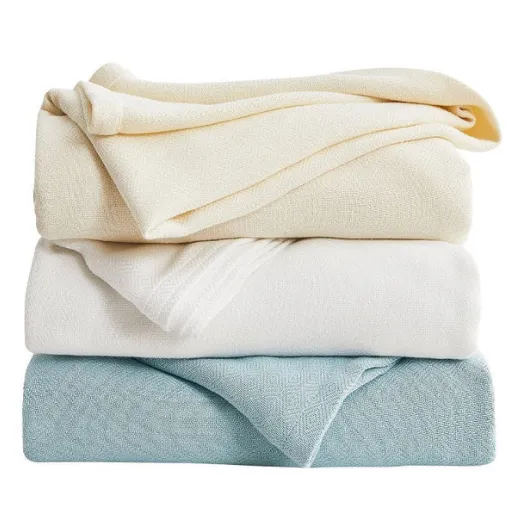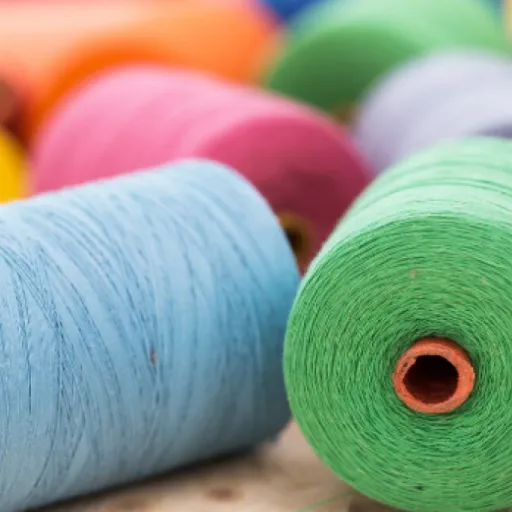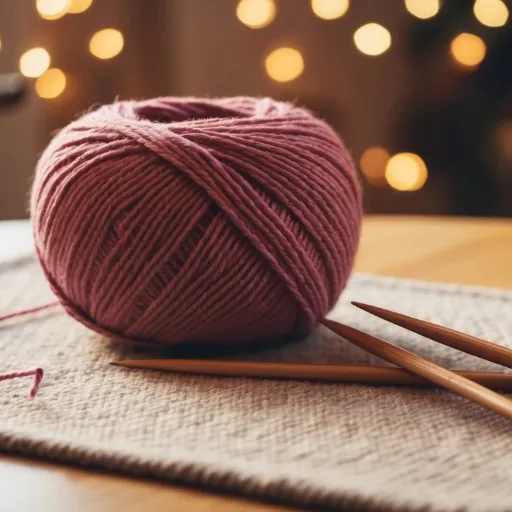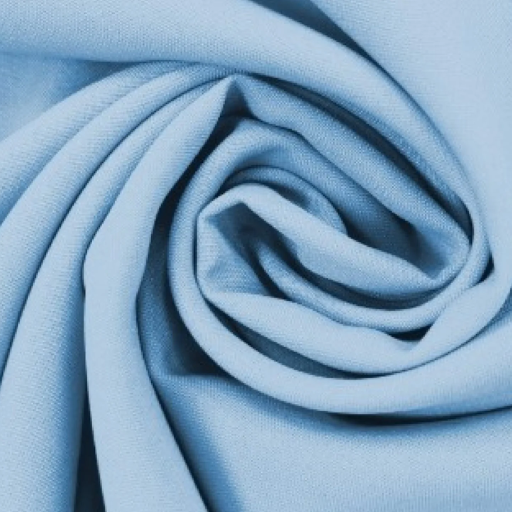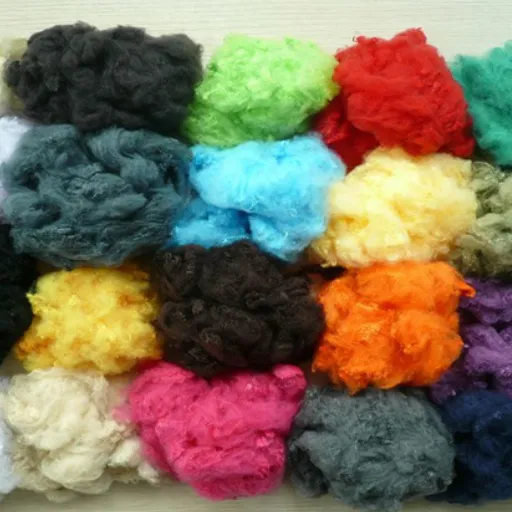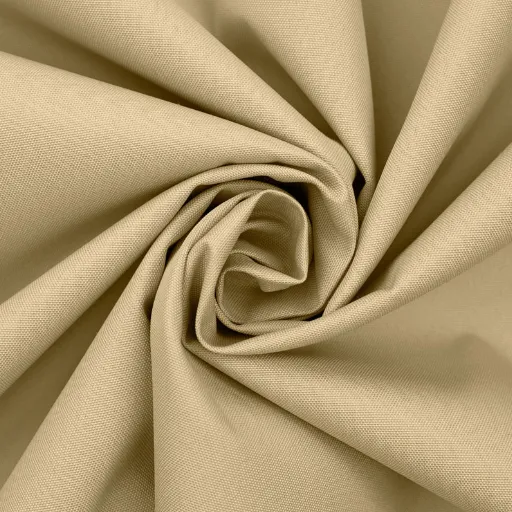When it comes to crocheting or knitting, yarn is one of those things that can make or break the project. While cotton, wool, and acrylic had always been the norm in the crafting circle, stretchy yarns have lately been getting their own spotlight for their peculiar qualities and varying purposes. Stretchy yarns add an extra level to your work, especially for garments that hug the body just so, for accessories where resilience is needed, or for projects where design details abound. This article will jolt you into the fantastic world of stretchy yarn: its perks, its best uses, and a few must-knows about working with these fibers. Whether you’re experienced or an eager beginner, the fun of stretchy yarns will open the door to a new level for you in both knitting and crocheting.
What Makes Yarn Stretchy?
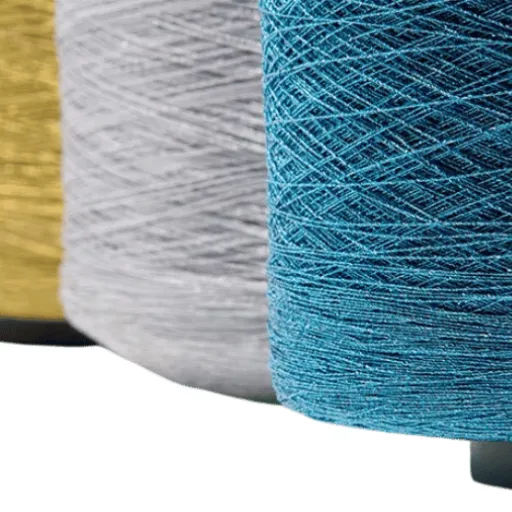
Elastic yarn gains its stretchability from the materials it is usually composed of. The addition of a generous portion of spandex, elastane, or latex to the fiber blend imparts flexibility and stretch. These materials allow the yarn to snap back to shape after it is pulled or stretched. Constructions, some of which are tightly spun or textured in design, may also contribute to the yarn’s stretchiness.
Understanding Elastic Fibers in Yarn
Elastic fibers in yarn provide the yarn with its functionality by imparting stretchability. They permit the yarn to resist deformation, so garments requiring a great deal of stretch can maintain their shape after extended use—think about activewear, socks, and fitted clothing. The elasticity also offers comfort, as it allows for undisturbed movement without any feeling of strain or discomfort. It is this very functionality that has placed elastic-based yarns in lucrative demand across various sectors, representing a fusion of flexibility with durability.
Blends of Spandex and Microfiber
The spandex-microfiber blends are renowned worldwide for their exceptional performance and comfort. The spandex ensures elasticity to the fabric, and the microfiber ensures its softness. These fabrics are too flexible, with a luxurious touch. These blends possess exceptionally high moisture-wicking and breathability properties, and are typically used in activewear, lingerie, and sportswear. Another reason why they are popular is that these fabrics are lightweight and maintain their shape well. Thus, they have a kinda slim fit with ultimate comfort in one fabric, reinforcing the concept of durability and style. This blending of materials is an ever-growing trend, carving a niche in both the fashion and athletic worlds, driven by the need for high-performance, multi-purpose fabrics.
The Role of Yarn Elasticity in Projects
Yarn elasticity has become a crucial factor in the success of many textile jobs, especially those that require flexibility and resilience. Having elasticity in yarn provides projects with an improved fit, comfort, and utility, as seen in the cases of socks, activewear, and fitted clothing. Recently, a search trend and analysis of this question have indicated that a fiber blend is most effective in optimizing elasticity. Adding elastic fibers to the cotton or wool yields a yarn that can stretch and recover without losing softness and breathability. This adaptation makes elastic yarns desirable for both regular and specialized uses —a delicate balance between utility and creativity.
Common Uses for Stretchy Yarn
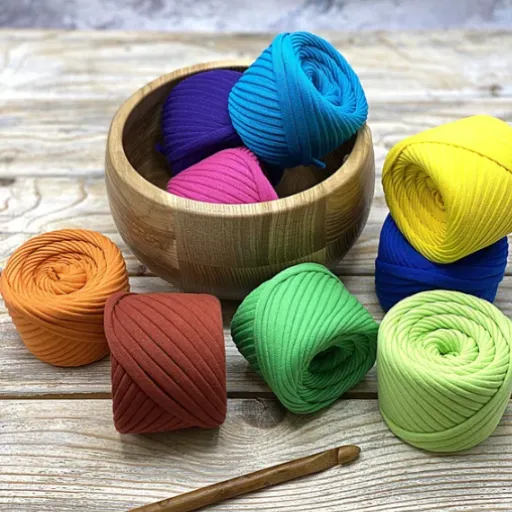
Stretchy yarn finds use in garment production where flexibility and comfort are desired. Some of its primary applications are:
- Activewear: Ideal for garments such as leggings, sports bras, and compression garments, as the yarn moves with the body and provides support.
- Socks and Hosiery: Offers a snug fit that is adaptable to various foot sizes while maintaining its shape.
- Swimwear: Must be made from yarn that can keep the shape of anything in water and allow freedom of movement.
- Underwear: Provides for comfortable, snug designs for everyday wear.
- Crafting Projects: Colors and makes silicone into accessories, toys, and anything that needs just a slight stretch and durability.
Sportswear and Activewear Creations
Sportswear and activewear combine athleticism with comfort, which is why these two categories are increasingly becoming common in daily outfit choices. According to the latest search-trend data, there has been a surge in searches for “breathable activewear” and “stretchable sportswear,” suggesting that consumers are seeking clothing that facilitates easy movement and promotes moisture evaporation. Lightweight and flexible, these materials are also used in the preparation of leggings, sports bras, and compression garments to support high-intensity workouts and provide durability. This functional style makes sportswear suitable for athletic and casual settings.
Comfortable Undergarments and Swimwear
Following these shifting trends in search queries, comfort is the new king for undergarments and swimwear. Searches for “seamless bras,” “wire-free lingerie,” and “supportive swimwear” have increased. This way, one can speak about an ever-growing desire to adhere to simplicity in comfort, style, or utility. Soft cotton blends, moisture-wicking, and quick-drying fabrics are highly sought after to meet these specifications. Notable modern-day buyers seek clothing that works well for both their day-to-day activities and active lifestyle, leaning toward comfort, breathability, and durability.
Accessories for Everyday Use
The latest search engine data highlights a few accessories that strike a balance between practicality and aesthetics, ideal for everyday life. Durable totes and tote bags, as well as multifunctional watches, made phone cases a top choice. Meanwhile, searches for lightweight, weatherproof scarves, minimalist jewelry, and hats are on the rise, as these accessories respond to the need for versatility with style. Buyers are increasingly choosing accessories that complement their lifestyles, offer functionality, and add a personal touch to their ensembles.
Types of Stretchy Yarn Available
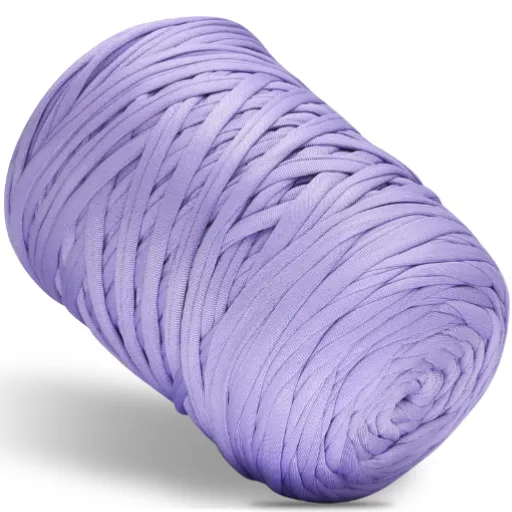
Elastic Yarns
These combinations contain elastic fibers, such as spandex or Lycra, which provide good stretch recovery properties and are ideal for fitted garments or accessories.
Wool-Blend Yarns
With nylon or other fibers, wool yields a stretchy and durable option. These are perfect for socks, mittens, and other tight apparel.
Cotton-Blend Yarns
Stretch cotton yarns are blended with synthetic fibers to enhance their stretchability, making them ideal for lightweight and airy projects.
Acrylic Yarns with Stretch
Some acrylic yarns stretch and retain their resilience, making them suitable for a variety of patterns and textures.
Bamboo-Blend Yarns
Bamboo yarns blended with elastic fibers offer ample stretch and a smooth, soft finish, making them perfect for comfortable attire.
Acrylic Blends for Knitting and Crocheting
Acrylic blends are popularly appreciated for being cheap, durable, and versatile for knitting and crocheting projects. Sometimes, these yarns are mixed with other fibers to improve texture, softness, and stretch. The lightness and ease of maintenance make it popular among both beginners and veterans. Additionally, these acrylic blends maintain brilliant colors perfectly, making them ideal for creating bright and attention-catching patterns. Acrylic blends guarantee consistent and fulfilling results when working with warm blankets, sweaters, or intricate accessories— or a combination of everything, depending on the pattern.
Elastic Yarn Options for Versatile Projects
Elastics specially prepared with yarn are used in products such as stretchable socks, gloves, fitted garments, or even hair accessories. These yarns typically include spandex, elastic nylon, or stretch polyester, all of which provide optimal stretching capabilities without compromising comfort or durability. Sock yarns are among the most popular types, where elastic fibers are commonly mixed for a snug fit; or they may also be sporty-weight yarns that stretch well for activewear projects. When choosing a stretchy yarn, consider how much stretch and recovery are required for the project, ensuring the stretchable fabric maintains its shape over time. Given they come in a plethora of colors, textures, and weights, elastic yarns are well-suited for creating designs that are useful and stylish.
Choosing Cotton and Nylon for Stretchy Projects
Cotton and nylon have been favored throughout the production process due to their comfort and flexibility. Cotton is ideal for wearables such as summer tops, baby apparel, and household products, primarily due to its breathability and softness. At the same time, nylon is ideal in terms of weather resistance and elasticity, as it enables the finished article to retain its shape during active use. When blended, these fibers lend the fabric stretch, strength, and durability. This blend is well-suited for active wear, socks, and fitted clothing that require a snug yet comfortable fit on the wearer. For optimal results, use a mix of cotton and nylon in an even ratio, complementary to the intended function and level of stretch in your design.
Care and Maintenance for Stretchy Yarn Projects
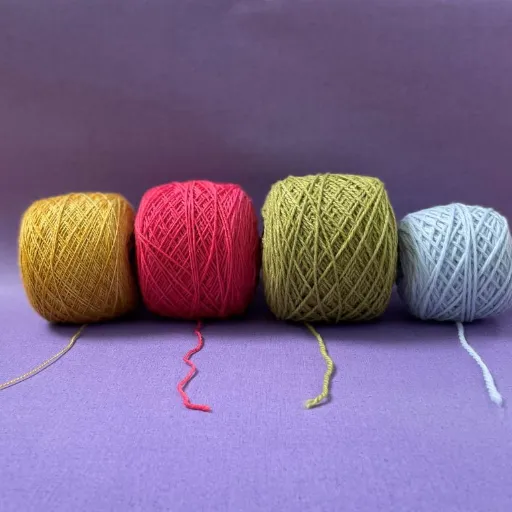
Stretch and durability must be considered; therefore, a general understanding of fabric quality is essential when creating stretchy yarn items. To promote these qualities:
1
Washing
Hand wash using lukewarm water and mild detergent. Avoid using strong chemicals and fabric softeners, as they can damage the fibers and reduce the stretch. When machine washing, always use the delicate cycle and place the item in a mesh laundry bag.
2
Drying
Lay the item flat to dry on a clean and dry towel. Do not hang; this will cause the work to stretch or grip. Also, avoid direct sunlight and heat sources, as they can weaken the fibers.
3
Storage
Keep folded and never hung, to prevent it from stretching with time. Store it in a cool, dry place, preferably in a breathable container to protect it from moisture and pests.
Washing and Drying Tips for Elastic Yarn
Washing elastic yarns requires utmost care to preserve their stretch and elasticity. If the care label is available, it is always advisable to follow its instructions; however, the safest option is hand washing. In lukewarm water, add a mild detergent to avoid damaging the fibers. One should not twist or wring the piece out of water, as this may undermine the very elasticity it is trying to maintain.
Dry the piece by laying it flat on a towel and ensuring it is reshaped to its original dimensions. Let the piece stay in an open, shady space away from direct sunlight or extreme heat; the heat will destroy the elastic strands within the yarn. This way, your hard work with elastic yarn can stay intact for a longer period.
Proper Storage Techniques to Maintain Elasticity
For your stretching yarn projects, proper storage upkeep is essential. First, do check that they are clean and dry, as dampness is the root cause of mold or mildew, which eats into the fibers. Then, store the items in a dry place, away from strong sunlight and high humidity, as both factors can degrade the elastic components in the yarn over time. Storage bags or containers made from breathable materials, such as cotton or linen, are best for protecting your items, as they allow for air circulation. Do not store them directly in plastic bags for an extended period. Additionally, safeguard storage areas from pests like moths by using natural repellents, such as cedar blocks or lavender sachets. By adhering to these recommendations, you can retain the strength and flexibility of your elastic yarn projects for many years to come.
Repairing and Maintaining Your Stretchy Yarn Items
Begin by locating the trouble spot, whether it’s a loose thread, a stretched section, or something as small as a hole. For small to medium tears, the loose yarn may simply be woven back in using a crochet hook or darning needle, paying attention to follow the correct stitch pattern to maintain consistency. For stretched areas, lightly wet the misplaced section and reshape it while it is still damp, letting it dry flat; this will help regain elasticity. The most harsh of damages can be patched or reinforced with yarn, in a color to match the existing stitches. Standard upkeep and care, such as regular inspections for wear and tear and washing with mild detergent, will keep your stretchy yarn items in good working condition for much longer. These steps will help keep your lovingly made items both attractive and durable.
Innovative Ways to Use Stretchy Yarn

- Comfortable Clothing – Stretchy yarn works well in knitting fitted items like socks, gloves, or leggings that require some stretch for added comfort.
- Hair Accessories – Make scrunchies and headbands that keep their shape with a bit of stretch from the yarn.
- Baby Products – Soft stretchable baby hats, booties, or blankets that are tender on the sensitive skin and easy to adorn.
- Home Décor – Knit or crochet stretchable chair covers or cushion cases and decorative bands for their utility and beauty.
- Sports and Fitness Gear – Making the must-have item of sweatbands and yoga mat straps that accommodate stretch and wear.
That spells the versatility of stretchy yarn in decidedly innovative uses in both the functional and aesthetic.
Incorporating Stretchy Yarn in Home Decor
When combining stretchy yarn with home decor, I envision creating items that are both practical and stylish. In my mind, I envision creating cushion covers, slip-resistant rugs, and chair socks that keep floors safe and enhance the atmosphere. With stretchy yarn, I can work on designs that fit snugly or fill odd shapes, always creating a neat and living finish for the home.
Unique Applications in Wearable Technology
Stretchy yarn has found charming applications in the wearable technology industry, bridging the gap between flexibility and innovation. The incorporation of conductive fibers and stretchy yarn in garments allows designers to monitor physiological signals such as heart rate and body temperature. This combination of materials offers the possibility of producing comfortable clothing that serves its function well. Stretchy yarn is used in the creation of bright compression garments that allow for body movement while simultaneously collecting real-time fitness data. These developments reveal the transition of age-old textile materials into the modern technology realm, providing solutions that are functional, aesthetically pleasing, and beneficial for health monitoring.
Artistic Projects with Elastic Yarn
Elastic yarn opens up a wide range of possibilities for artistic expression, where functionality meets creativity. Since it stretches and bends, it’s an ideal material for creating interactive sculptures, wearable art, and dynamic wall hangings. Artists are also experimenting with combinations of elastic yarn and LEDs or sensors, allowing their artwork to respond to being touched or nearly moved, thereby adding a degree of interactivity. This modern approach to elastic yarn blurs the fine line between the pure world of textile art and the very modern one of technological intervention, offering a less-explored path to new creative horizons.
Reference Sources
Using these five professional and authoritative reference sources, you may verify the correctness of your article on “stretchy yarn.” All are academic sources that go into deep detail on yarn structure, mechanics, and applications:
Structure and Mechanics of Yarns
This chapter provides a deep insight into yarn structure and mechanics, including elastic yarns, making it a valuable reference for understanding the mechanics of stretching yarns.
Fancy Yarns: An Appraisal
The paper considers fancy elastic yarns, discussing their composition and applications from a scientific perspective on stretchy yarns.
Spun Yarn Technology
This book thus stands as the most comprehensive reference on spun yarns and also contains a chapter dealing with stretch yarns and their classification.
Handbook of Yarn Production: Technology, Science, and Economics
During yarn production, yarns become pliable; after all, elastic also comes in yarn form. I am, therefore, submitting this book for your consideration.
Advances in Knitting Technology
This book discusses developments in knit technology, including the use of elastic yarns and descriptions of properties like resiliency and bulk.
Frequently Asked Questions (FAQs)
What is stretchy yarn?
Stretchy yarn, also known as elastic yarn, is a type of yarn made from fibers that can stretch and return to their original shape. This yarn is commonly used in various projects, such as swimwear, children’s and baby jumpers, and accessories, due to its elastic properties, which provide both comfort and functionality.
What are the benefits of using elastic yarn for knitting and crocheting?
Using elastic yarn helps to create items that maintain their shape and fit, even after being worn or used extensively. This yarn is particularly useful for projects like bikinis and swimsuits where a snug fit is essential. Additionally, elastic yarn is renowned for its softness and durability, making it an ideal choice for everyday use.
How does the weight of yarn affect my crochet projects?
The weight of yarn plays a crucial role in the final look and feel of your crochet projects. Lighter yarns, such as lace or sport weight, are perfect for delicate items, while heavier weights, like bulky or super bulky, are better suited for warm sweaters or blankets. Choosing the right yarn weight ensures that your finished project meets your expectations for both functionality and aesthetics.
What is the recommended hook size for elastic yarn?
The recommended hook size for elastic yarn can vary depending on the specific type of yarn and the project being worked on. Generally, using a hook that allows for a tight fit while crocheting is beneficial, as it helps maintain the shape and elasticity of the finished item. Always refer to the corresponding technical parameters on the yarn label for guidance.
Can I use elastic yarn for sewing projects?
Yes, elastic yarn can be used for sewing projects, particularly when creating items that require stretch, such as fitted garments or home decor pieces that need to maintain their shape. It is advisable to pair elastic yarn with compatible elastic fabric to achieve the best results.
Is stretchy yarn suitable for making children’s clothing?
Absolutely! Stretchy yarn is ideal for children’s clothing, including jumpers, as its elastic properties allow for comfort and ease of movement. Furthermore, items made from stretchy yarn can easily accommodate growth, making them practical for everyday use.
What types of fibers are commonly used in stretchy yarn?
Stretchy yarn is often made from a blend of fibers such as spandex, polyester, or nylon. These fibers provide the necessary elasticity, ensuring the yarn remains soft and comfortable against the skin. Cotton yarn is also used for lighter, breathable items, especially in warmer climates.
How do I care for my elastic yarn creations?
Caring for your elastic yarn creations involves following specific washing and drying instructions that often accompany the yarn label. Generally, it is recommended to wash items made with elastic yarn in cold water and lay them flat on a clean surface to dry, ensuring that the elasticity and shape of the item are preserved.
What are some specific projects I can make with stretchy yarn?
Stretchy yarn is versatile and can be used for a variety of specific projects, including bikinis, swimsuits, fitted tops, leggings, and accessories like headbands or wristbands. Its ability to stretch and recover makes it an excellent choice for both crochet and knit items that require a snug fit.








